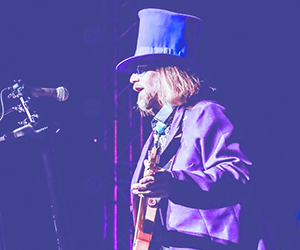Documentary questions growth of prison system
February 15, 2017
Slavery constitutes a dark chapter of U.S. history. But what if it never really ended? What if it merely changed and mutated, continuing to exploit, oppress, and destroy into the 21st century? If you think slavery ended with the passing of the 13th Amendment in 1865, the Oscar-nominated documentary “13th” will show you otherwise.
The 13th Amendment to the U.S. Constitution reads as follows: “Neither slavery nor involuntary servitude, except as a punishment for crime whereof the party shall have been duly convicted, shall exist within the United States, or any place subject to their jurisdiction.” The movie contends that the italicized text provided a loophole in the Amendment that has allowed the prison system to become the modern version of slavery.
I watched the movie at a community screening of about 80 people. The pain, intensity, sadness, and anger we collectively experienced was palpable through the shaking heads, vocalizations, gasps, and clenched fists. The film is at times unrelenting, with graphic footage of black men gunned down by police, lynchings, deplorable prison conditions, and protesters being pepper sprayed, bitten by dogs, and hosed.
But this is the brutal reality and legacy of black history in America. Those of us who are white can turn the movie off, stop the discomfort, and escape the pain. Black people cannot. This is their history and their present. We owe it to them to experience and learn about this history.
The film traces how the U.S. prison population ballooned from 350,000 prisoners in 1970 to 2.3 million today, 40 percent of whom are black. The story is told through expert commentary from civil rights activists such as Angela Davis, Michelle Alexander, Van Jones, and others, as well as interviews with people whose policies have hurt people of color such as Newt Gingrich and political lobbyists from the American Legislative Exchange Council.
“13th” explains that prison populations exploded through a series of calculated political moves associated with “The War on Drugs.” Mandatory minimum sentences and “third strike” laws became commonplace under the Nixon, Reagan, Bush, and Clinton administrations. Crack-cocaine warranted longer sentences than cocaine, which was more likely to be dealt by white people. Clinton’s 1994 Federal Crime Bill militarized local police forces with SWAT teams, armored tanks, and riot gear, all prepared for fighting a literal war against drugs in America’s inner cities.
Privatization of the prison industrial complex, and the fact that 97 percent of people take plea bargains rather than go to trial, sealed the fate of an entire generation of young black and Latino men. Today, one in three black men will go to jail at some point in their lifetime.
The movie makes clear that “The War on Drugs” was never actually about drugs – it was about cleansing American streets of black and brown bodies and creating a new slavery. Once someone has been convicted of a felony, they lose their right to vote. They cannot find a job. They are denied housing. Their family cuts ties with them. They have no other choice but to continue to live a life of crime and poverty.
The footage can be jarring in its honesty, frightening in its reality, and prescient in its portrayal of Donald Trump’s words overlaying civil rights images, yet it’s an absolutely must-see movie.
The film ends with these words from lawyer and civil rights activist Bryan Stevenson that we all must heed to ensure a better future: “People say all the time, ‘I don’t understand how people could’ve tolerated slavery. How could they have made peace with that? How did people make sense of the segregation, this white and colored-only drinking. That’s so crazy. If I was living at that time, I would have never tolerated anything like that’. And the truth is, we are living at this time, and we are tolerating it.”









